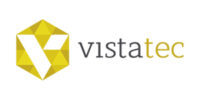Working in the localization industry can feel like the ground is constantly shifting under your feet. AI-driven innovations are advancing faster than ever while geopolitical shifts and new sustainability, accessibility, and data privacy regulations add more complexity. At the same time, stakeholders are demanding more personalized and inclusive content faster.
In times like these, it’s worth stepping back to see the bigger picture. While the future may be unpredictable, taking the time to look for patterns in workflows, market trends, or technology can reveal valuable insights. It’s these moments of clarity that help businesses stay adaptable and seize opportunities they might not have anticipated.
The trends shaping 2025 will challenge businesses to rethink their strategies and embrace new ways of working. Here’s what we believe will define the year ahead.
1. Linguists at the Crossroads of Change
While many are being impacted by the changes in our industry, linguists are feeling it the most. Over the last few decades, linguists have evolved from classically trained translators into technologically adept communications professionals.
Yes, AI is part of that shift. Some observers outside the industry assume AI can handle translation entirely, devaluing the expertise linguists bring. While AI is generating headlines, it’s just one part of a larger evolution in the industry.
The data says that linguists aren’t going away anytime soon. It is projected that employment of interpreters and translators will grow by 24% from 2020 to 2030, highlighting the importance of linguists’ skills and expertise to global communication.
The real hurdle facing linguists is the growing sophistication and speed of language services work. Shrinking client budgets and higher expectations for faster turnarounds and specialized content mean linguists are taking on tasks far beyond translation. From prompt creation and editing to greater content customization, today’s projects demand a mix of cultural expertise, technical knowledge, and data handling. Linguists are evolving into roles that require managing intricate pipelines, data annotation and labeling, and training AI systems to ensure data accuracy and quality.
To stay competitive in 2025, linguists should focus on adaptability and upskilling. As language service providers enter a new era as global content service providers, the demand for linguists to evolve and expand their roles is growing. Beyond translation, linguists are contributing to content optimization and managing AI-driven workflows, all while ensuring that global communication connects with real-world audiences. This shift challenges businesses to think differently about their localization strategies—supporting linguists not only as service providers but as critical partners in delivering diversified, multifaceted content.
For businesses, this means recognizing and supporting linguists’ evolving roles. Linguists are still the heart and soul of the language services business. Organizations that value linguists and prioritize their development will be better equipped to navigate the growing complexity of global content creation.
2. Data is Driving More Focused Localization Strategies
Data makes a big difference when it comes to global communication. In 2025, companies are harnessing the power of AI to leverage data in powerful new ways. Moving beyond only tracking performance, organizations will use new AI data-driven insights to guide more of their global strategy, from analyzing market demographics to optimizing content for specific audiences.
Companies use data to refine market segmentation, targeting regions or demographics where localized content can drive the most impact. Advanced analytics also provide more insight into user behavior, helping businesses go further to adapt tone, imagery, or even product offerings to align with cultural preferences. Netflix is a good example, leveraging data to understand viewing habits, regional preferences, and cultural nuances to better tailor its global content for each user.
Predictive data models are another powerful tool, enabling companies to better anticipate translation needs—like which languages or content formats will resonate best—before entering new markets or launching campaigns.
Data also contributes significantly to measuring success. Metrics like engagement rates and conversions are now directly tied to localization, offering clear evidence for ROI. This shift is helping businesses move beyond simply „localizing content“ to creating strategies deeply informed by audience insights and market potential.
3. Specialized Industries are Fueling Innovative Language Solutions
Industries like online gaming and telehealth are presenting new challenges and opportunities for the language industry. These sectors expect highly tailored workflows and technical expertise to meet their unique requirements.
In gaming, the rise of live-service games and immersive storytelling means localization teams must handle real-time updates, voiceovers, and culturally relevant adaptations to keep players engaged across regions. Telehealth brings its own set of challenges, including complying with strict regulations and adapting content for emerging technologies like remote patient care and AI diagnostics.
In both industries, translation as a feature, where multilingual capabilities are embedded directly into products or services, is becoming increasingly common. From real-time translation in gaming platforms to in-app translation for telehealth providers, integrating translation as a built-in function enhances user experience and accessibility.
These industries are driving the need for innovation in localization. Providers that can develop specialized solutions for these fields will find significant opportunities to grow in 2025.
4. Sustainability and Accessibility are More Than “Nice to Have.”
Regulations like the EU Accessibility Act and the EU Corporate Sustainability Reporting Directive (CSRD) are influencing global business practices and forcing organizations to stretch beyond translation.
These regulations are becoming an integral part of localization. Companies must now ensure that content is accessible with features like screen-reader compatibility and closed captions while also meeting sustainability goals such as reducing the carbon footprint of digital operations.
These elements are becoming a core part of doing business, and many organizations are building accessibility and environmental responsibility into their corporate values. This shift reflects regulatory pressures and growing customer expectations for inclusive and sustainable practices.
5. AI’s Influence on Language Services will Grow but Also Evolve
AI is arriving in force across the language services industry, particularly in enhancing efficiency and the quality assurance process. But AI isn’t just improving workflows; some language service companies have rebranded themselves to highlight new AI capabilities.
Regarding day-to-day use, LLMs and other AI-based tools are increasingly used to automate quality checks, speed up reviews, and maintain accuracy across large volumes of translations. As AI streamlines routine tasks, companies can focus their human resources on tasks that require deeper cultural insight and creativity.
Yet, the expansion of AI in localization brings challenges, particularly in training and quality standards. As AI takes on more complicated content and languages, the industry must embrace AI training to ensure that translations remain unbiased and culturally appropriate. This means developing impartial AI solutions that can adapt to the subtle nuances of language and context, ensuring that localization is not only fast but also equitable.
Paradoxically, linguists are localization’s best assets when it comes to leveraging LLMs and AI-based tools. Their expertise in language and cultural nuances is essential for training and fine-tuning these technologies to effectively handle localization tasks.
Where We Go From Here
As we move into 2025, the localization industry continues adapting to major changes. AI is becoming a crucial part of our toolkit for speeding up translations and reshaping our work. At the same time, the push for better sustainability and accessibility practices is making us rethink our workflows to ensure they’re responsible and inclusive.
As we integrate more technology, we’re mindful that there’s a risk of losing the human touch that makes all the difference when communicating across cultures. But we’re also keeping in mind that, at its core, localization is about connecting people, and AI is helping us do that by enhancing our ability to adapt more content into more languages more quickly and affordably.
As we head into 2025, there are a lot of unknowns, but opportunities are emerging, too. The localization industry has faced change before with the introduction of computer-assisted translation tools and neural machine translation. Companies and people who can adapt to these latest changes will find themselves well-positioned in the months and years ahead.
Contact us today to learn how Vistatec can help you navigate the evolving localization landscape.

